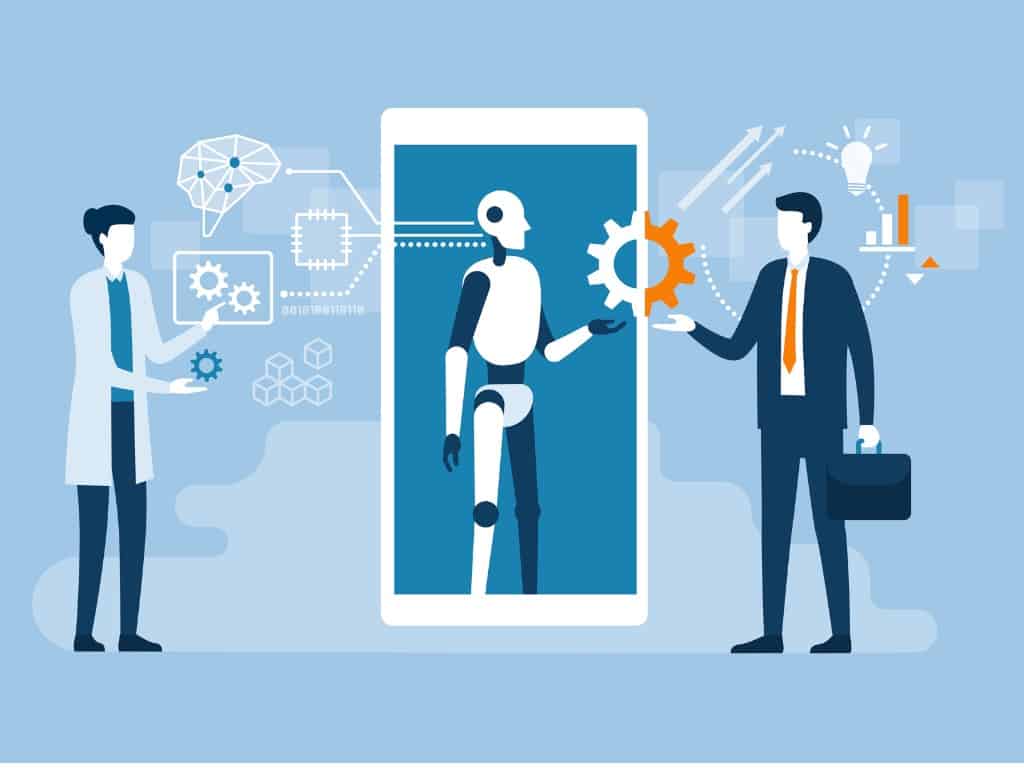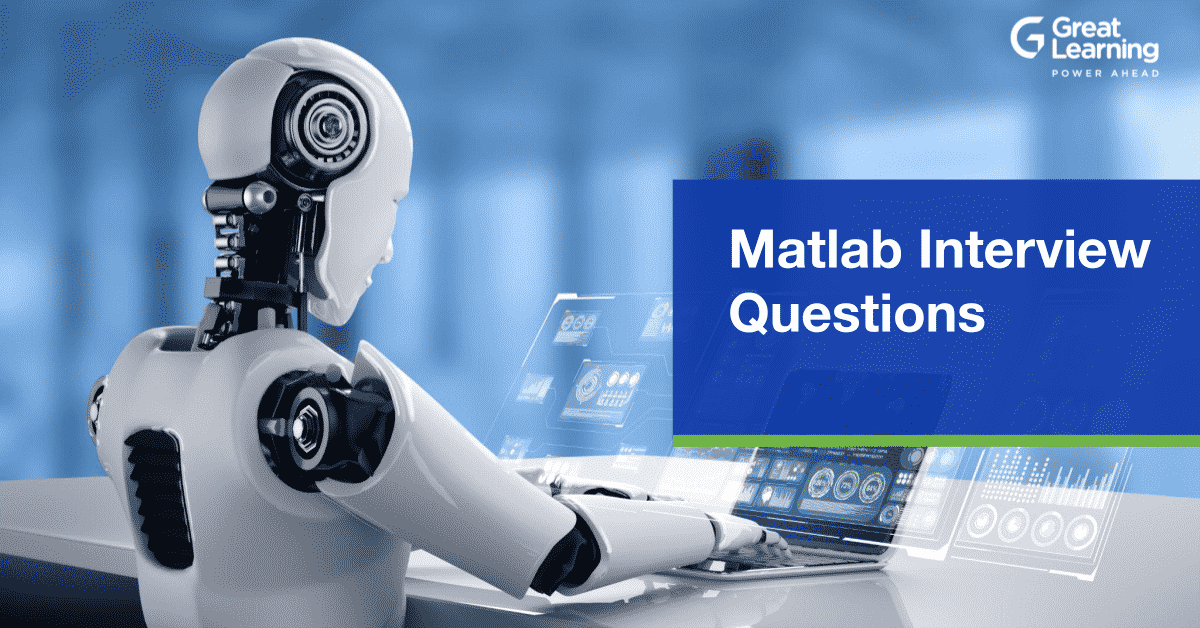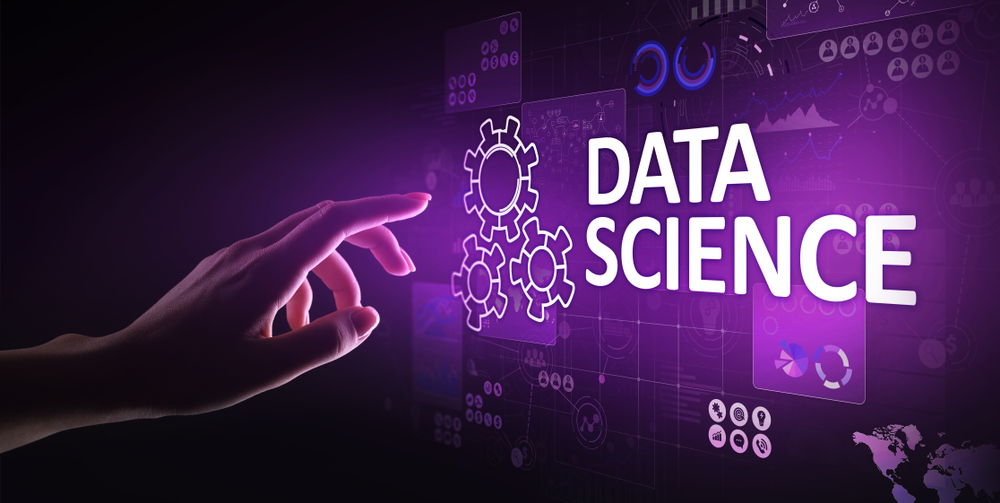- What is Data Science?
- What is Artificial Intelligence?
- What is Machine Learning?
- Difference between AI and Machine Learning
- Difference Between DS and ML
- Relationship between Data Science, Artificial Intelligence, and Machine Learning
- Difference Between Data Science, Artificial Intelligence, and Machine Learning
- Machine Learning vs. Data Science Salary
- Data Science, Artificial Intelligence, and Machine Learning Jobs
- FAQs
- Further Reading
While the terms Data Science, Artificial Intelligence (AI), and Machine learning fall in the same domain and are connected, they have specific applications and meanings. There may be overlaps in these domains now and then, but each of these three terms has unique uses.
Here is a brief about Data Science vs. Machine Learning vs. AI in a shorter video version.
What is Data Science?
You must have wondered, ‘What is Data Science?’. Data science is a broad field of study about data systems and processes aimed at maintaining data sets and deriving meaning from them. Data scientists use tools, applications, principles, and algorithms to make sense of random data clusters. Since almost all kinds of organizations generate exponential amounts of data worldwide, monitoring and storing this data becomes difficult. Data science focuses on data modeling and warehousing to track the ever-growing data set. The information extracted through data science applications is used to guide business processes and reach organizational goals.

Great Learning also offers various Data Science Courses and postgraduate programs that you can choose from. Learn from industry experts through online mentorship sessions and dedicated career support.
Scope of Data Science
One of the domains that data science influences directly is business intelligence. Having said that, there are specific functions for each of these roles. Data scientists primarily deal with huge chunks of data to analyze patterns, trends, and more. These analysis applications formulate reports which are finally helpful in drawing inferences. A Business Intelligence expert picks up where a data scientist leaves – using data science reports to understand the data trends in any particular business field and presenting business forecasts and course of action based on these inferences. Interestingly, a related field also uses data science, data analytics, and business intelligence applications- Business Analyst. A business analyst profile combines a little bit of both to help companies make data-driven decisions.
Elevate your career with our comprehensive data science and business analytics course, tailored to nurture the modern business analyst.rn
Data scientists analyze historical data according to various requirements by applying different formats, namely:
- Predictive causal analytics: Data scientists use this model to derive business forecasts. The predictive model showcases the outcomes of various business actions in measurable terms. This can be an effective model for businesses trying to understand the future of any new business move.
- Prescriptive Analysis: This kind of analysis helps businesses set their goals by prescribing the actions which are most likely to succeed. The prescriptive analysis uses the inferences from the predictive model and helps businesses by suggesting the best ways to achieve those goals.
Data science uses many data-oriented technologies, including SQL, Python, R, Hadoop, etc. However, it also extensively uses statistical analysis, data visualization, distributed architecture, and more to extract meaning out of sets of data.
Data scientists are skilled professionals whose expertise allows them to quickly switch roles at any point in the life cycle of data science projects. They can work with Artificial Intelligence and machine learning with equal ease, and data scientists need machine learning skills for specific requirements like:
- Machine Learning for Predictive Reporting: Data scientists use machine learning algorithms to study transactional data to make valuable predictions. Also known as supervised learning, this model can be implemented to suggest the most effective courses of action for any company.
- Machine Learning for Pattern Discovery: Pattern discovery is essential for businesses to set parameters in various data reports, and the way to do that is through machine learning. This is unsupervised learning where there are no pre-decided parameters. The most popular algorithm used for pattern discovery is Clustering.
Data Science Skills
Some Data Science skills include:
- Programming: R, Python, SQL, SAS, MATLAB, STATA
- Data Wrangling: Cleaning, Manipulating, and Exploring Data
- Data Visualization: Creating graphs and charts to visualize data
- Data Analysis: Conducting statistical analyses of data
- Machine Learning: Building algorithms to learn from data
Also check out Basics of Time Series in Data Science
What is Artificial Intelligence?
AI, a rather hackneyed tech term used frequently in our popular culture – has come to be associated only with futuristic-looking robots and a machine-dominated world. However, in reality, Artificial Intelligence is far from that.
Simply put, artificial intelligence aims at enabling machines to execute reasoning by replicating human intelligence. Since the main objective of AI processes is to teach machines from experience, feeding the correct information and self-correction is crucial. AI experts rely on deep learning and natural language processing to help machines identify patterns and inferences.
Scope of Artificial Intelligence
- Automation is easy with AI: AI allows you to automate repetitive, high-volume tasks by setting up reliable systems that run frequent applications.
- Intelligent Products: AI can turn conventional products into bright commodities. When paired with conversational platforms, bots, and other intelligent machines, AI applications can improve technologies.
- Progressive Learning: AI algorithms can train machines to perform any desired functions. The algorithms work as predictors and classifiers.
- Analyzing Data: Since machines learn from the data we feed, analyzing and identifying the correct data set becomes very important. Neural networking makes it easier to train machines.
Artificial Intelligence Skills
Some artificial intelligence skills include:
- Data analysis
- Pattern recognition
- Machine learning
- Natural language processing
- Robotics
- Predictive modeling
- Computer vision
- Expert systems
- Neural networks
What is Machine Learning?
Machine Learning is a subsection of Artificial intelligence that devices mean by which systems can automatically learn and improve from experience. This particular wing of AI aims to equip machines with independent learning techniques so that they don’t have to be programmed. This is the difference between AI and Machine Learning.
Machine learning involves observing and studying data or experiences to identify patterns and set up a reasoning system based on the findings. The various components of machine learning include:
- Supervised machine learning: This model uses historical data to understand behavior and formulate future forecasts. This learning algorithm analyzes any training data set to draw inferences that can be applied to output values. Supervised learning parameters are crucial in mapping the input-output pair.
- Unsupervised machine learning: This ML algorithm does not use classified or labeled parameters and focuses on discovering hidden structures from unlabeled data to help systems infer a function correctly. Algorithms with unsupervised learning can use both generative learning models and a retrieval-based approach.
- Semi-supervised machine learning: This model combines supervised and unsupervised learning elements, yet neither of them exists. It works by using both labeled and unlabeled data to improve learning accuracy. Semi-supervised learning can be a cost-effective solution when labeling data is expensive.
- Reinforcement machine learning: This kind of learning doesn’t use any answer key to guide the execution of any function. The lack of training data results in learning from experience, and the process of trial and error finally leads to long-term rewards.
Machine learning delivers accurate results derived through the analysis of massive data sets. Applying AI cognitive technologies to ML systems can result in the effective processing of data and information. But what are the critical differences between Data Science vs. Machine Learning and AI vs. ML? Continue reading to learn more. You can also take a Python for Machine Learning course and enhance your knowledge of the concept.
Machine Learning Skills
Some machine learning skills include:
- Ability to identify patterns in data
- Ability to build models to make predictions
- Ability to tune model parameters to optimize performance
- Ability to evaluate models for accuracy
- Ability to work with large data sets
Difference between AI and Machine Learning
| Artificial Intelligence | Machine Learning |
|---|---|
| AI aims to make an intelligent computer system work like humans to solve complex problems. | ML allows machines to learn from data so they can provide accurate output |
| Based on capability, AI can be categorized into Weak AI, General AI, and Strong AI | ML can be categorized into Supervised Learning, Unsupervised Learning, and Reinforcement Learning |
| AI systems are concerned with maximizing the chances of success | Machine Learning primarily concerns with accuracy and patterns |
| AI enables a machine to emulate human behavior | Machine Learning is a subset of AI |
| Mainly deals with structured, semi-structured, and unstructured data | Deals with structured and semi-structured data |
| Some applications of AI are virtual assistants such as Siri, chatbots, intelligent humanoid robots, etc. | Applications of ML are recommendation systems, search algorithms, Facebook auto friend tagging systems, etc. |
Difference Between DS and ML
| Data Science | Machine Learning |
|---|---|
| Data Science helps with creating insights from data that deals with real-world complexities | Machine Learning helps in accurately predicting or classifying outcomes for new data points by learning patterns from historical data |
| Preferred skillset: – domain expertise – strong SQL – ETL and data profiling – NoSQL systems, Standard reporting, Visualization | Preferred skillset: – Python/ R Programming – Strong Mathematics Knowledge – Data Wrangling – SQL Model-specific Visualization |
| Horizontally scalable systems preferred to handle massive data | GPUs are preferred for intensive vector operations |
| Components for handling unstructured raw data | Significant complexity is with the algorithms and mathematical concepts behind them. |
| Most of the input data is in a human-consumable form | Input data is transformed specifically for the type of algorithms used |
Relationship between Data Science, Artificial Intelligence, and Machine Learning
Artificial Intelligence and data science are a wide field of applications, systems, and more that aim at replicating human intelligence through machines. Artificial Intelligence represents action-planned feedback of Perception.
Perception > Planning > Action > Feedback of Perception
Data Science uses different parts of this pattern or loop to solve specific problems. For instance, in the first step, i.e., Perception, data scientists try to identify patterns with the help of the data. Similarly, in the next step, i.e., planning, there are two aspects:
- Finding all possible solutions
- Finding the best solution among all solutions
Data science creates a system that interrelates the points above and helps businesses move forward.
Although it’s possible to explain machine learning by taking it as a standalone subject, it can best be understood in the context of its environment, i.e., the system it’s used within.
Simply put, machine learning is the link that connects Data Science and AI. That is because it’s the process of learning from data over time. So, AI is the tool that helps data science get results and solutions for specific problems. However, machine learning is what helps in achieving that goal. A real-life example of this is Google’s Search Engine.
- Google’s search engine is a product of data science
- It uses predictive analysis, a system used by artificial intelligence, to deliver intelligent results to the users
- For instance, if a person types “best jackets in NY” on Google’s search engine, then the AI collects this information through machine learning
- Now, as soon as the person writes these two words in the search tool “best place to buy,” the AI kicks in and, with predictive analysis, completes the sentence as “best place to buy jackets in NY,” which is the most probable suffix to the query that the user had in mind.
To be precise, Data Science covers AI, which includes machine learning. However, machine learning itself covers another sub-technology — Deep Learning.
Deep Learning is a form of machine learning. Still, it differs in the use of Neural Networks, where we stimulate the function of a brain to a certain extent and use a 3D hierarchy in data to identify patterns that are much more useful.
Difference Between Data Science, Artificial Intelligence, and Machine Learning
Although the terms Data Science vs. Machine Learning vs. Artificial Intelligence might be related and interconnected, each is unique and is used for different purposes. Data Science is a broad term, and Machine Learning falls within it. Here’s the critical difference between the terms.
| Artificial Intelligence | Machine Learning | Data Science |
| Includes Machine Learning. | Subset of Artificial Intelligence. | Includes various Data Operations. |
| Artificial Intelligence combines large amounts of data through iterative processing and intelligent algorithms to help computers learn automatically. | Machine Learning uses efficient programs that can use data without being explicitly told to do so. | Data Science works by sourcing, cleaning, and processing data to extract meaning out of it for analytical purposes. |
| Some of the popular tools that AI uses are- 1. TensorFlow2. Scikit Learn 3. Keras |
The popular tools that Machine Learning makes use of are-1. Amazon Lex2. IBM Watson Studio3. Microsoft Azure ML Studio | Some of the popular tools used by Data Science are-1. SAS2. Tableau3. Apache Spark4. MATLAB |
| Artificial Intelligence uses logic and decision trees. | Machine Learning uses statistical models. | Data Science deals with structured and unstructured data. |
| Chatbots, and Voice assistants are popular applications of AI. | Recommendation Systems such as Spotify, and Facial Recognition are popular examples. | Fraud Detection and Healthcare analysis are popular examples of Data Science. |
Explore all the free courses at Great Learning Academy, get machine learning certificates for free, and learn in-demand skills.
Machine Learning vs. Data Science Salary
A Machine Learning Engineer is an avid programmer who helps machines understand and pick up knowledge as required. The core role of a Machine Learning Engineer is to create programs that enable a machine to take specific actions without any explicit programming. Their primary responsibilities include data sets for analysis, personalizing web experiences, and identifying business requirements. Salaries of a Machine Learning Engineer and a Data Scientist can vary based on skills, experience, and company hiring.
Machine Learning Engineer Salary
| Company | Salary |
| Deloitte | ₹ 6,51,000 PA |
| Amazon | ₹ 8,26,000 PA |
| Accenture | ₹15,40,000 PA |
Salary by Experience
| Experience Level | Salary |
| Beginner (1-2 years) | ₹ 5,02,000 PA |
| Mid-Senior (5-8 years) | ₹ 6,81,000 PA |
| Expert (10-15 years) | ₹ 20,00,000 PA |
Data scientists are professionals who source, gather, and analyze vast data sets. Most business decisions today are based on insights drawn from data analysis, which is why a Data Scientist is crucial in today’s world. They work on modeling and processing structured and unstructured data and also work on interpreting the findings into actionable plans for stakeholders.
Data Scientist Salary
| Company | Salary |
| Microsoft | ₹ 1,500,000 PA |
| Accenture | ₹ 10,55,500 PA |
| Tata Consultancies | ₹ 5,94,050 PA |
| Experience Level | Salary |
| Beginner (1-2 years) | ₹ 6,11,000 PA |
| Mid-Senior (5-8 years) | ₹ 10,00,000 PA |
| Expert (10-15 years) | ₹ 20,00,000 PA |
This is one of the significant differences between a Data Scientist and a Machine Learning Engineer.
Data Science, Artificial Intelligence, and Machine Learning Jobs
Data Science, Artificial Intelligence, and Machine Learning are lucrative career options. However, the truth is neither of the fields is mutually exclusive. There’s often overlap regarding the skillset required for jobs in these domains.
Data Science roles such as Data Analyst, Data Science Engineer, and Data Scientist have been trending for quite some time. These jobs offer excellent salaries and a lot of growth opportunities.
Some Requirements of Data Science-associated Roles.
- Programming knowledge
- Data visualization and reporting
- Statistical analysis and math
- Risk analysis
- Machine learning techniques
- Data warehousing and structure
Whether it is report-making or breaking down these reports to other stakeholders, a job in this domain is not limited to just programming or data mining. Every role in this field is a bridging element between the technical and operational departments. They must have excellent interpersonal skills apart from technical know-how.
Similarly, Artificial Intelligence and Machine Learning jobs are absorbing a huge chunk of talent off the market. Roles such as Machine Learning Engineer, Artificial Intelligence Architect, AI Research Specialist, and similar jobs fall into this domain.
Technical Skills required for AI-ML Roles
- Knowledge of programming languages like Python, C++, Java
- Data modeling and evaluation
- Probability and statistics
- Distributed computing
- Machine Learning algorithms
As you can see, the skillset requirement of both domains overlap. In most cases, courses on data science and AIML include basic knowledge of both, apart from focusing on the respective specializations.
Even though data science vs. machine learning vs. artificial intelligence overlap, their specific functionalities differ and have respective application areas. The data science market has opened up several services and product industries, creating opportunities for experts in this domain.
Explore all the free courses at Great Learning Academy, get the certificates for free, and learn in-demand skills.
FAQs
1. Are Machine Learning and Data Science the same?
Ans: No, Machine Learning and Data Science are not the same. They are two different domains of technology that work on two different aspects of businesses worldwide. While Machine Learning focuses on enabling machines to self-learn and execute any task, Data science focuses on using data to help businesses analyze and understand trends. However, that’s not to say there isn’t any overlap between the two domains. Machine Learning and Data Science depend on each other for various applications as data is indispensable, and ML technologies are fast becoming integral to most industries.
2. Which is better, Machine Learning or Data Science?
Ans: To begin with, one cannot compare the two domains to decide which is better – precisely because they are two different branches of study. It is like comparing science and arts. However, one cannot deny the apparent popularity of data science today. Almost all industries have recourse to data to make more robust business decisions. Data has become an integral part of businesses, whether for analyzing performance or device data-powered strategies or applications. On the other hand, Machine Learning is still an evolving branch that is yet to be adopted by a few industries, which only goes on to say that ML technologies will have more demand relevance in the near future. So, professionals in both these domains will be in equal demand in the future.
3. Is Data Science required for Machine Learning?
Ans: Since both Machine Learning and Data Science are closely connected, a basic knowledge of each is required to specialize in either of the two domains. More than data science, the knowledge of data analysis is required to get started with Machine Learning. Learning programming languages like R, Python and Java are required to understand and clean data to use it for creating ML algorithms. Most Machine Learning courses include tutorials on these programming languages and fundamental data analysis and data science concepts.
4. Who earns more, Data Scientist or Machine Learning Engineer?
Ans: Data Scientists and Machine Learning Engineers are in-demand roles in the market today. If you consider the entry-level jobs, then data scientists seem to earn more than Machine Learning engineers. An average data science salary for entry-level roles is more than 6 LPA, whereas, for Machine Learning engineers, it is around 5 LPA. However, when it comes to senior experts, professionals from both domains earn equally well, averaging around 20 LPA.
5. What is the Future of Data Science?
Ans: Putting it slightly differently – Data Science is the future. No businesses or industries, for that matter, will be able to keep up without data science. Many transitions have already happened worldwide where businesses seek more data-driven decisions, and more are to follow suit. Data science has rightly been dubbed as the oil of the 21st century, which can mean endless possibilities across industries. So, if you are keen on pursuing this path, your efforts will be highly rewarded with a fulfilling career, fat pay cheques, and a lot of job security.
6. Can a Data Scientist become a Machine Learning Engineer?
Ans: Yes, Data Scientists can become Machine Learning. It will not be challenging for data scientists to transition to a Machine Learning career since they would have worked closely on Data Science technologies frequently used in Machine Learning. Machine Learning languages, libraries, and more are also often used in data science applications. So data science professionals do not need to put in a humongous amount of effort to make this transition. So yes, with the right upskilling course, data scientists can become machine learning engineers.
Discover learning opportunities through our online courses with certificates designed for aspiring professionals.
Further Reading
- Statistics for Machine Learning
- Data Science Tutorial For Beginners | Learn Data Science Complete Tutorial
- What is Artificial Intelligence?
- Deep Learning Tutorial: What it Means and what’s the role of Deep Learning
- Python Tutorial For Beginners – A Complete Guide | Learn Python Easily














